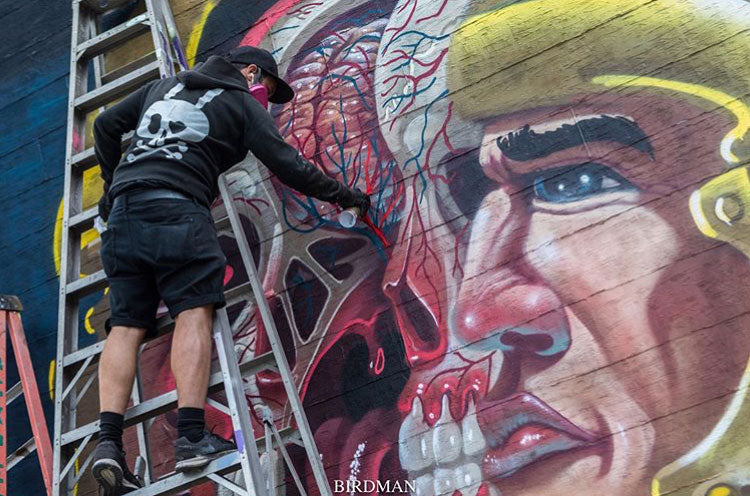Murals, public works of art meant to inspire, provoke, add beauty, celebrate or commemorate, are found the world over.
They can elevate a dreary urban landscape into one that appears lively or they can illustrate to visitors the unique traits of the neighborhood. Murals can bring awareness to a cause, such as saving the monarch butterfly population, and of course, they can make political statements.

Banksy, for example, has been leaving satirical political and social statements in the form of murals for decades now, provocative in nature and darkly humorous. His work is highly sought, not only because of its cleverness but because of its secretive nature and the fact that he doesn’t sell reproductions of photographs of his work.
These days if one wants to buy Banksy street art they often have to remove the wall on which it was painted.
While most viewers see murals as legitimate artwork, there are some who find it an affront to their senses. In 2017, a Glendale, CA store named 3D Retro commissioned the installation of a mural by San Francisco-based artist Nychos featuring a dissected Roman Centurian.

Photo taken by: @birdmanphotos
One resident of the city found the work offensive and subsequently pushed for its removal, which was granted by the city. The demise of the mural was met with much dismay from most community members, who felt the work added interest and depth to the otherwise nondescript building.
The push to have the mural painted over was successful due to a stipulation in the city’s policy on such installations in which it is not to contain any advertisement; Nychos signed his work with the logo of his company Rabbit Eye Movement and therefore the piece was found to be in violation of the policy.

Photo taken by: @birdmanphotos
The mural in question in Glendale was said to have made the city resident who made the complaint feel “unsafe” and uncomfortable. There are cities all over the world who view murals as a way to bring life to their city, while others oppose it and view it as "graffiti" or vandalism. Some art is purposely meant to make viewers uncomfortable, but does that mean it shouldn’t exist? What one person finds provocative and a source of discomfort is entirely subjective.

Photo taken by: @birdmanphotos
A mural is meant to evoke public understanding, whereas graffiti doesn’t invite viewers to gain any knowledge of the subject matter and contains words.
Since the Nychos piece contained his name and the year it was installed, the argument was made that the work was in violation of the city’s graffiti policy, but you can see where the lines become blurred between murals, street art, and graffiti. Where do you think the line should be drawn as far as what constitutes the difference between art and graffiti? Comment below to join the conversation.

